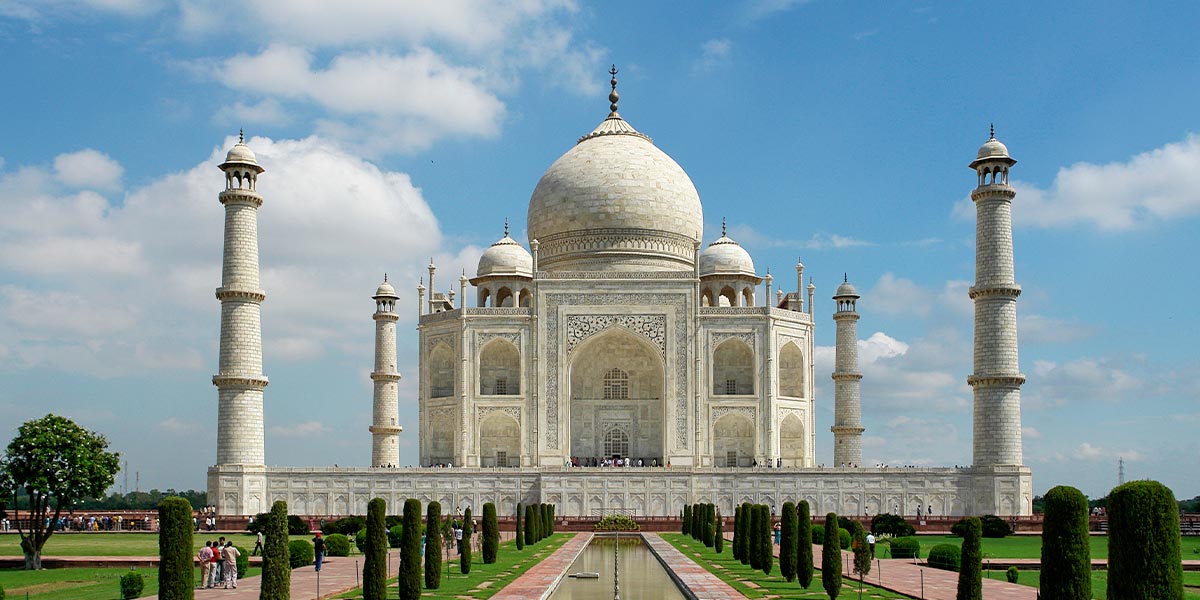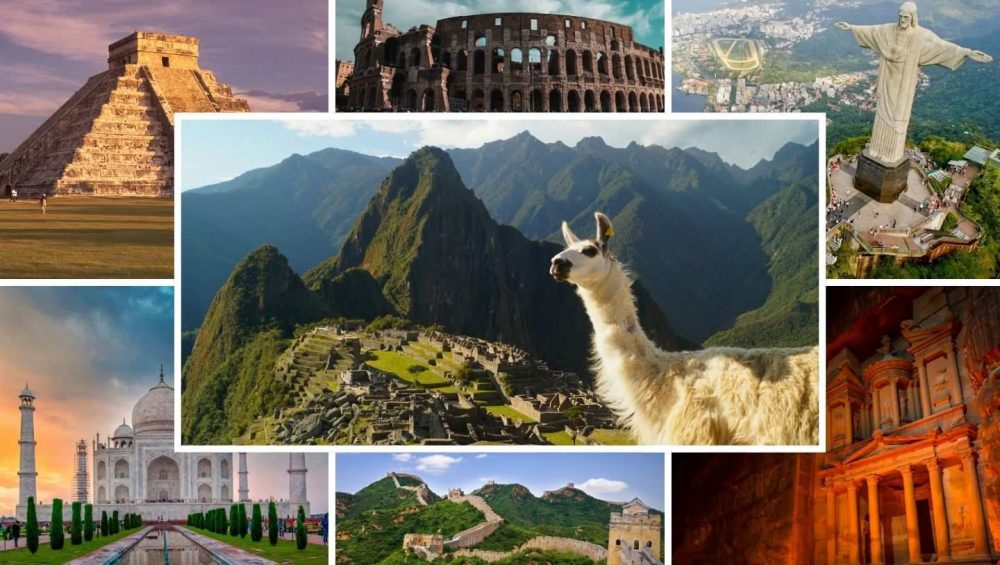Do you know the Seven Wonders of the World? These are a list of monuments globally recognized for their historical, cultural, and architectural value. They were chosen in 2007 through a global vote organized by the New7Wonders foundation. This new selection replaced the ancient wonders of the classical world, which included the Great Pyramid of Giza, the Hanging Gardens of Babylon, and the Lighthouse of Alexandria. Of the ancient ones, only the Egyptian pyramid is still preserved.
For its part, Machu Picchu is part of this new list along with the Colosseum in Rome, the Great Wall of China, the Taj Mahal, Petra, Christ the Redeemer, and Chichén Itzá. This is thanks to its inclusion, which highlights the importance of the Inca legacy and its perfect integration of architecture and nature. Furthermore, to this day, it remains one of the most visited tourist destinations in South America.
But why was it chosen? It was chosen for its historical value, its natural setting, and its impressive engineering. Built on a mountain ridge at more than 2,400 meters of altitude, this Inca citadel continues to defy the passage of time and continues to surprise travelers. Today it is a symbol of identity, national pride, and one of the main tourist attractions in the world. Below, we will explore why Machu Picchu has earned its place among the seven modern wonders.
History of Machu Picchu
Machu Picchu was built in the 15th century during the rule of Inca Pachacutec. Although there are no written records, it is believed that it functioned as a ceremonial and resting center for the Inca elite. Its strategic location among mountains and its urban design reinforce the idea that it also had agricultural, religious, and administrative functions.
Rediscovery by Hiram Bingham
In 1911, the American explorer Hiram Bingham arrived at the citadel guided by local villagers. Although some locals already knew the site, it was his expedition that made it known to the world; from then on, Machu Picchu sparked international interest and became one of the most important archaeological discoveries of the 20th century.
International Recognitions and Protection
Machu Picchu has received multiple distinctions over the years:
- In 1983, it was declared a Cultural and Natural Heritage of Humanity by UNESCO.
- In 2007, it was chosen as one of the Seven Wonders of the World.
- It is considered an icon of global tourism and a symbol of Andean heritage.
In addition, the Peruvian government and various international entities work on its conservation, regulating access to protect its structure from mass tourism.
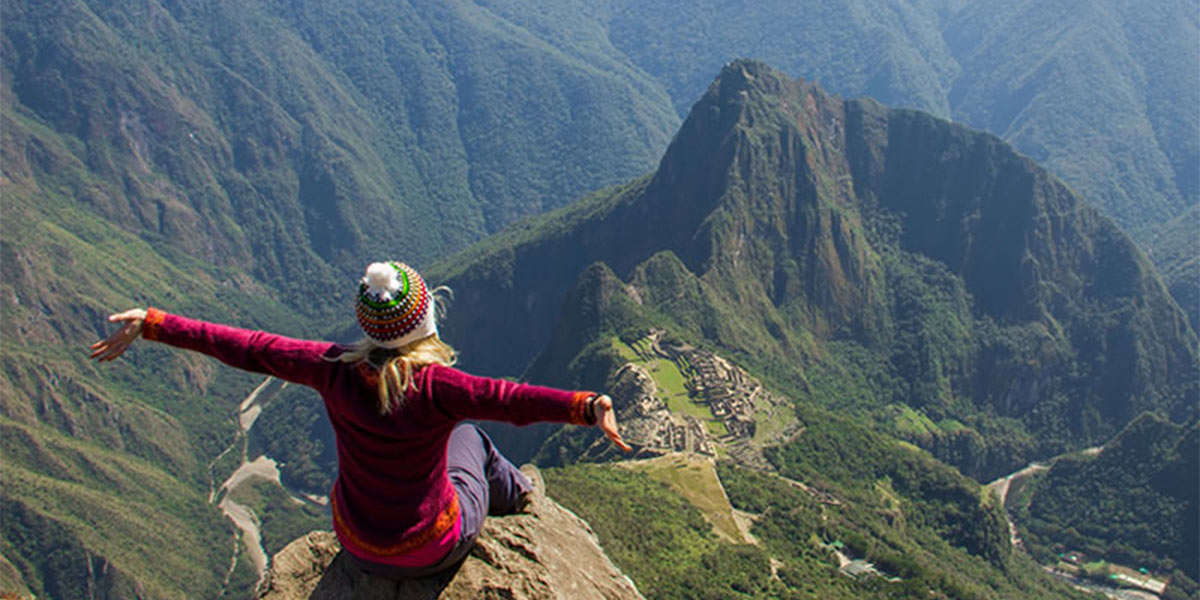
What to see in Machu Picchu
When exploring Machu Picchu, it is possible to visit its most important sectors such as the Temple of the Sun, the Intihuatana (a ceremonial stone linked to the Inca calendar), and the famous agricultural terraces that were used for cultivation and erosion control. Today, visitors access through three official circuits set by the Ministry of Culture: Circuit 1 goes through the upper part of the citadel; Circuit 2, more complete, goes through the most emblematic sectors; and Circuit 3, for a more direct entry through the lower part.
For those looking for a panoramic view, there are two mountains that surround the citadel: Huayna Picchu and Machu Picchu Mountain. The first, accessible through Circuit 3A, is the most famous for its steep climb and the vertical view over the Inca city. In contrast, Machu Picchu Mountain, with entry through Circuit 1A, offers a longer walk, but with open landscapes of the natural environment.
The Fauna and Flora of the Surroundings
The sanctuary also stands out for its biodiversity. Located between the Andes and the high jungle, its Andean-Amazonian environment is home to orchids, ferns, bromeliads, and native trees such as alder or queuña. Among the most representative animals are the spectacled bear, the Andean cock of the rock, and various species of butterflies and hummingbirds. This unique mix of nature and architecture makes Machu Picchu an unforgettable place.
How to visit Machu Picchu
Visiting Machu Picchu is possible both on a relaxed trip and on an adventure route. It all depends on the type of experience you are looking for and the time available. Below, we show you the main ways to get there and some useful recommendations to plan your visit:
- Train to Machu Picchu: It is the most comfortable and fastest option. It departs from Cusco or Ollantaytambo, crossing Andean landscapes and high jungle. In just a few hours, it leaves you in Aguas Calientes, the closest town to the citadel.
- Hikes to Machu Picchu: There are several trekking routes, but the most complete and popular is the 4 day Inca Trail. This route follows ancient Inca trails and passes through archaeological sites before arriving directly at the Sun Gate of Machu Picchu.
- Organized tours from Lima: For those looking for a complete and hassle-free experience, tours from Lima offer transportation, accommodation, train transfers, and a tourist guide. They are the best option to make the most of the trip, especially if you have few days.
- Practical recommendations
- Appropriate clothing: Bring light clothing for the day and a waterproof jacket. In the dry season, also sunscreen and a hat. The weather changes quickly, so it is important to be prepared.
- Recommended season: From April to October is the best time, as there is less rain and greater visibility. July and August are the busiest months.
- Health and acclimatization: If you are coming from Lima or abroad, it is advisable to spend a few days in Cusco before going up to Machu Picchu. This helps you adapt to the altitude and avoid altitude sickness.
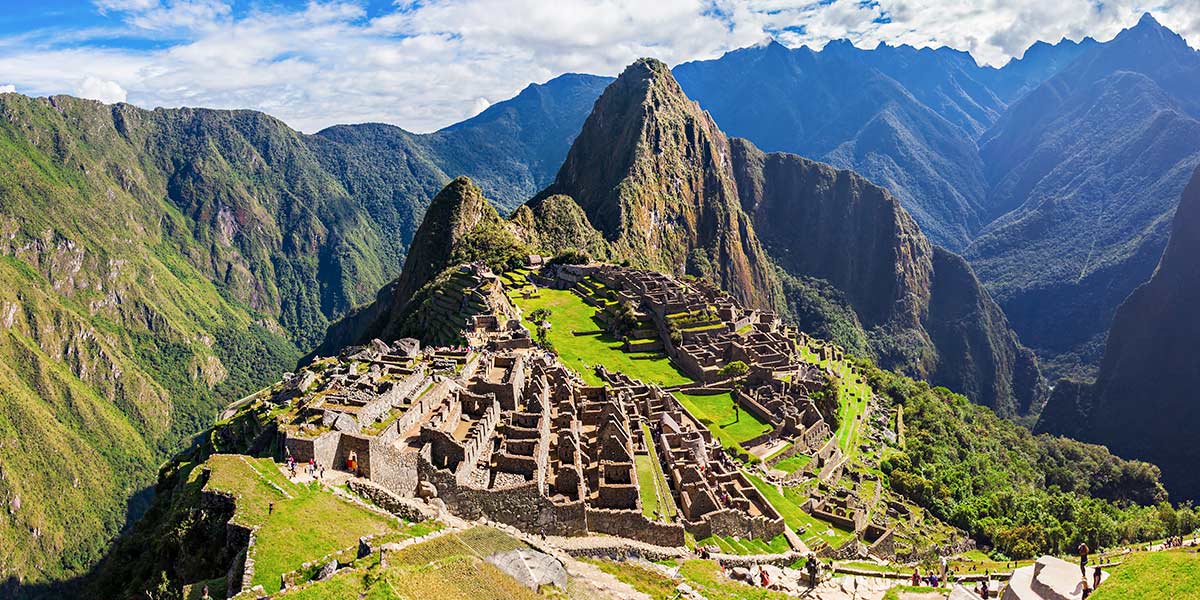
Experiences nearby
1. Aguas Calientes and the thermal baths
Just a few minutes from the train station is Aguas Calientes, the base town for visiting Machu Picchu. One of its main attractions are the thermal baths, known for their relaxing properties. These natural pools, with temperatures ranging between 38 °C and 46 °C, are ideal for resting after a hike or before climbing to the Inca citadel. They are located about 800 meters from the town center.
2. Manuel Chávez Ballón Site Museum
Located just a 30-minute walk from Aguas Calientes, this museum offers a clear and concise overview of the history, architecture, and discovery of Machu Picchu. It exhibits original pieces found in the area and explanatory panels about the function of the citadel. It is a recommended stop for those who want to better understand the archaeological context of the place before or after the main visit.
3. The Gardens of Mandor
Just 3 kilometers from Aguas Calientes, this natural space offers a quiet tour along paths surrounded by native flora, birds, and a waterfall that marks the end of the road. It is an ideal place to enjoy contact with nature without straying too far from the town. Entry has a symbolic cost and can be reached by walking in approximately 45 minutes.
4. The Machu Picchu Butterfly House
Located just 15 minutes from Aguas Calientes, this small ecological center houses more than 400 butterflies in their natural habitat. Here you can learn about their life cycle, behavior, and their role in the local ecosystem. It is a brief but educational visit, ideal for those looking for a different activity near the town. As a curious fact: Machu Picchu is one of the places with the greatest diversity of butterflies in Peru.
The Other Wonders of the World
Besides Machu Picchu, there are six monuments that complete the list of the Seven Wonders of the World. Each was chosen for its history, impressive architecture, and cultural significance. Below is a brief description of each:
1. Chichen Itza (Mexico)
Located on the Yucatán Peninsula, Chichen Itza was one of the most important cities of the Mayan civilization. Its most recognized structure is El Castillo or Temple of Kukulkan, a stepped pyramid that reflects advanced astronomical knowledge. During the equinoxes, the shadow cast on its staircases forms the figure of a moving serpent, a phenomenon that attracts thousands of visitors each year.
In addition to the main pyramid, the archaeological complex includes the Observatory, the Ball Court, and other temples that show the high degree of scientific, religious, and political development of the Mayans. It was declared a World Heritage Site by UNESCO in 1988.
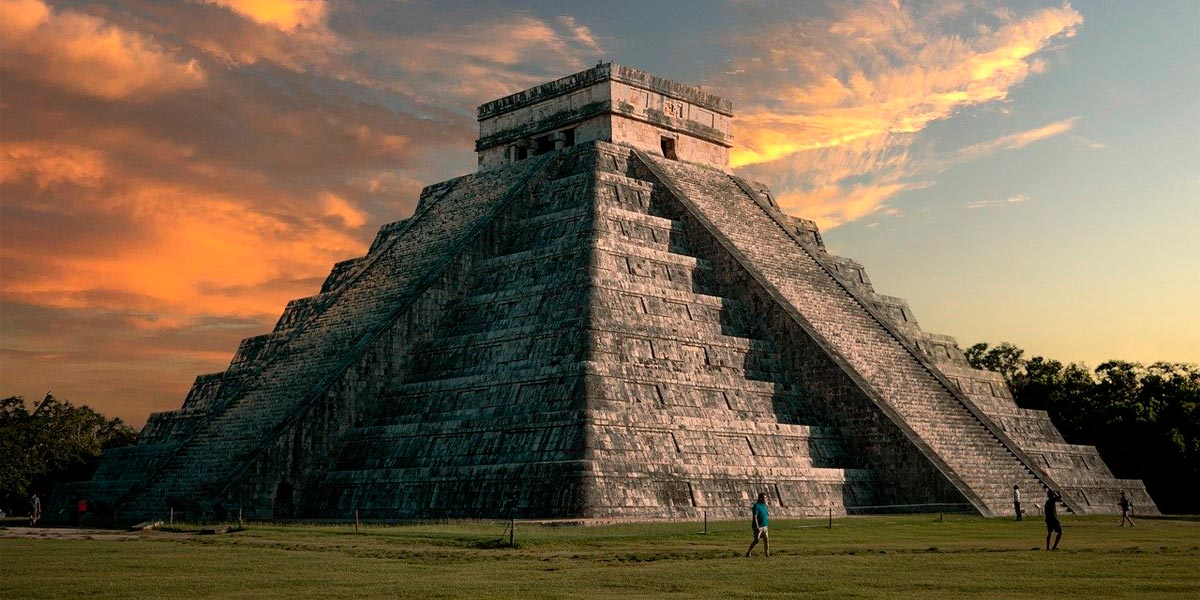
2. Colosseum (Italy)
The Colosseum in Rome, also known as the Flavian Amphitheater, is one of the most iconic monuments of the Roman world. Inaugurated in 80 A.D., it was used for almost five centuries to host public spectacles such as gladiatorial fights, simulated naval battles, and theatrical performances. Its architectural design allowed thousands of people to enter and exit in a few minutes.
Despite earthquakes and the passage of time, much of its structure is still preserved. Today it is one of the most visited sites in Europe and a symbol of Roman engineering, capable of holding up to 50,000 spectators with an advanced system of tiers, passages, and retractable awnings.
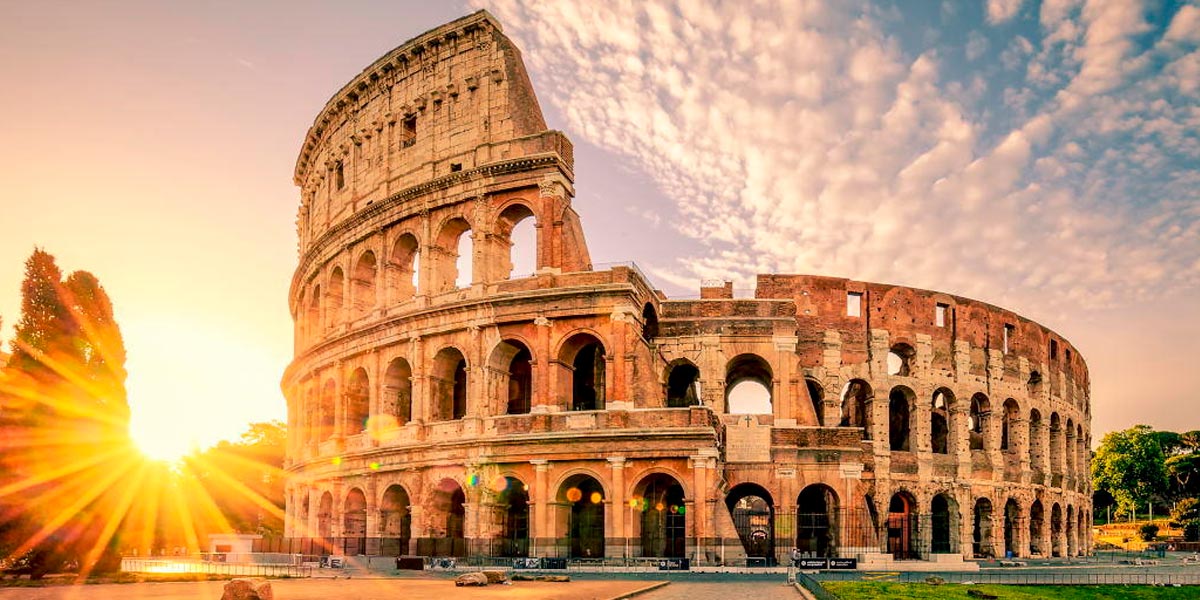
3. Christ the Redeemer (Brazil)
The Christ the Redeemer statue stands over Rio de Janeiro from the top of Corcovado Hill, 710 meters above sea level. It was inaugurated in 1931 and measures 30 meters in height, with its outstretched arms reaching 28 meters. It is considered an icon not only of Brazil, but of all Latin America.
Its construction took nine years and was partly financed by popular donations. Beyond its religious value, it represents the openness and hospitality of the Brazilian people. From its base, you have one of the most panoramic views of the city, including the beaches of Ipanema, Copacabana, and Sugarloaf Mountain.

4. Petra (Jordan)
Petra, known as the “rose city of the desert”, was the capital of the ancient Nabataean kingdom. Carved directly into the rocky walls of the Wadi Musa valley, this city prospered as a key point on trade routes between Arabia, Egypt, and the Mediterranean. Its most famous building is The Treasury (Al-Khazneh), whose façade measures 40 meters in height.
Throughout its canyons, royal tombs, theaters, and complex hydraulic systems can be found. Petra was rediscovered by the Swiss explorer Johann Ludwig Burckhardt in 1812, and since then it has fascinated the world. In 1985 it was declared a World Heritage Site and today it is one of the main tourist attractions in the Middle East.
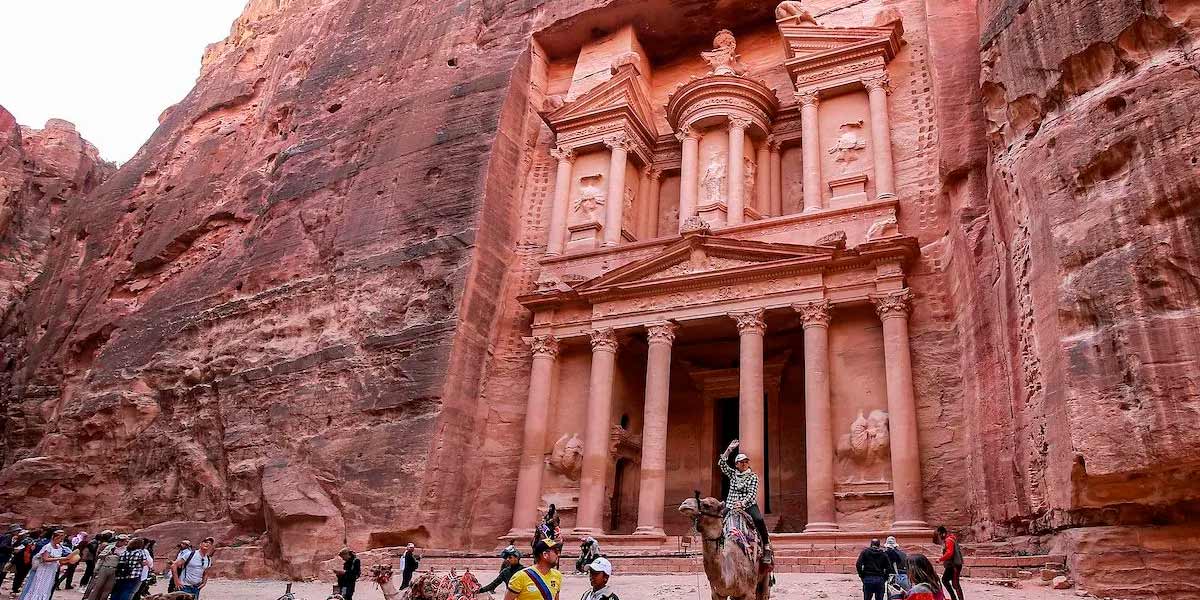
5. Great Wall of China (China)
The Great Wall of China is not a single structure, but a network of fortifications built during several dynasties over more than 2,000 years. It stretches for more than 21,000 kilometers from the Yellow Sea to the Gobi Desert. Its main function was to protect the Chinese Empire from invasions from the north, especially from the Mongols.
In addition to its military function, the wall served as a communication route, border control, and tax collection point. Its construction required the work of millions of people, many of whom lost their lives during the process. Today it is a symbol of Chinese perseverance and one of the most imposing architectural achievements in history.
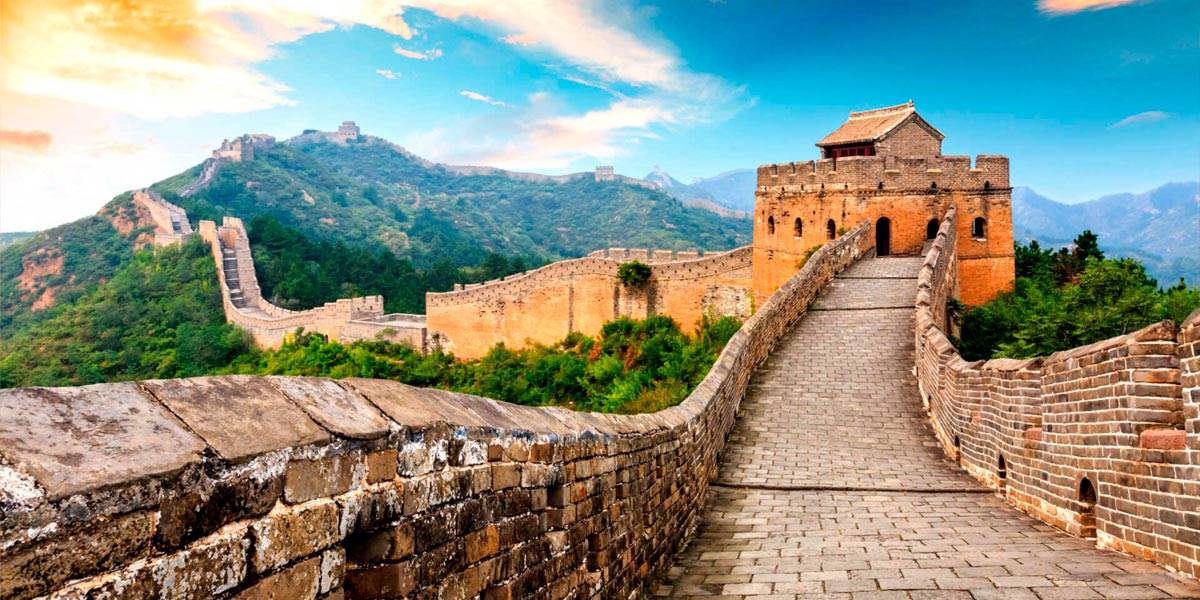
6. Taj Mahal (India)
The Taj Mahal is a white marble mausoleum built between 1631 and 1648 by order of the Mughal emperor Shah Jahan, in honor of his wife Mumtaz Mahal, who died giving birth to their 14th child. Its construction involved more than 20,000 artisans and architects from all over the empire and Central Asia. Its design combines elements of Islamic, Persian, and Indian art.
It is located on the banks of the Yamuna River, in the city of Agra, and its central dome, symmetrical minarets, and perfectly designed gardens make it an architectural masterpiece. Over time, it has transformed into a symbol of eternal love and is one of the most photographed and visited places in India.
